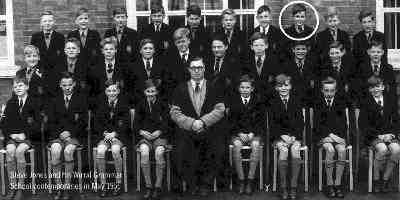
Figure 1.--State secondary schools in the 1950s, like this academically selective secondary school, required the junior boys to wear short pants. |

|
Boys fashions appeared to change little in the post World War II period, but beneath the surface very significant changes were beginning. The lack of change imediately after the War was in part due to the difficult economic straits faced by Britain as a consequence of the sacrifices and massive costs of the War. Rationing continued
for years after the War, into the 1950s. Many families were hard put to meet basic needs which left little time or money for fashionable boys' clothes. I also have read that in some cases during the War as well as the immediate post-War times when military service was still compulsory, that because a young man would soon be drafted and would at that point be supplied with full uniform, he continued to wear short trousers after leaving school for the few months of civilian work until the call-up came. It was not felt worthwhile at that point to spend money on a long-trouser suit that would get so
little use. This was especially true because of the difficult financial conditions. A new suit for only a few months was a luxury that many British families could not afford. A similar condition pervailed in Germany and other European countries during the late 1940s and early 50s when quite old boys would still be wearing short pants suits. Styles finally began to change by the mid-1950s. The most notable changes were the declining popularity of school caps and the a shift toward long pants suits. Many schools comtinued to require short pants school uniform. Even state secondary schools often required shorts for the junior boys. Some private schools requited then even for the older boys. Short pants suits became less and less common. While British boys commonly wore blazers and ties to school, many boys rarely dressed up for other occasions. Church attendance, for example, was much less common than in America. As a result,
many boys did not have a dress up suit. Short pants were still commonly worn in the 1960s, but by increasingly younger boys. By the end of the decade it was rare to see an older boy wearing short pants suits with knee socks, except at a few mostly private schools. Even the Scouts, but not the Cubs, following the popular trend
switched to long pants in 1969.
Boys fashions appeared to change little in the post World War II period, but beneath the surface very significant changes were beginning. A problem in Britain was the weak economy because of post-War socialist governments. As a result, war-time ationing continued into the 1950s while the German Economic Miracle was transforming not only Gemany, but much of Western Europe. As the English economy slowly improved, higher wages permitted families to devote more of their disposable income to clothing. By the 1960s, epecially the late-60s we see major fashion changes. England participated in the evolution of pan-European styles in the 1970s.
One major change in the post-World War II era is that boys began acquiring larger wardrobes. Before the War many boys had one set of best clothes and another set of clothes for school. Play clothes were generally just worn out school clothes. There were not a lot of specilised casual or play clothes. This changed after the War, especially by the 1950s. Families varied as to what boys did after school. Many boys just kept on their school uniform, taking off their tie and blazer if their school required them. Other mums insisted that boys change out of their school uniform toi make sure there chool clothes were kept in good condition. More casual clothes were worn during the weekends and furing the summer. Immediately after the War, a boys play clothes reflected his schools clothes in part play clothes were commonly his old school clothes. Thus boys who wore shorts to school commonly had shorts for play. By the 1960s, many boyswho wore shhort pants to school had long pants for play, often jeans.
Ome of the best reflection of English boys' clothing styles pver time is the uniforms worn at British schools. Every school had an photograph, and often class photograph. Comparing these and other school photographs over time provides a useful time-line assessment of clothing and hair styles. Almost all secondary schools and private schools had school uniforms. Most state primary schools, however, did not introduce uniforms until the 1960s.
Navigate the Boys' Historical Clothing Web Site:
[Return to the Main English chronology page]
[About Us]
[Introduction]
[Activities]
[Biographies]
[Chronology]
[Clothing styles]
[Countries]
[Bibliographies]
[Contributions]
[FAQs]
[Glossaries]
[Images]
[Links]
[Registration]
[Tools]
[Boys' Clothing Home]
